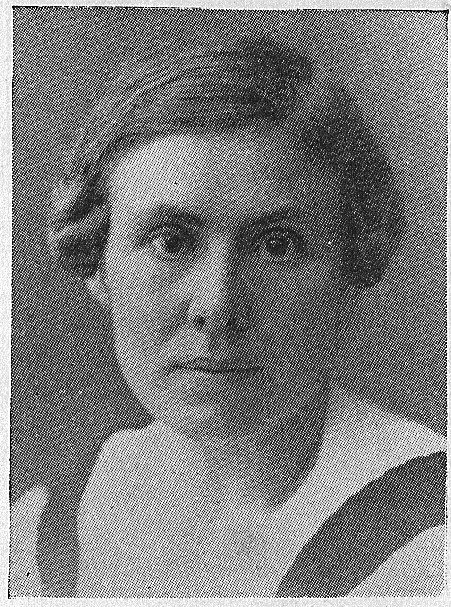Riborg Böving-Albråten was a ceramist and a designer who was a member of Rackstadgruppen (the Rackstad group). She also worked as a pattern designer at Gustavsberg and Rörstrand porcelain factories.
Riborg Böving-Albråten was born on 24 September 1880. She was the seventh child of ten born to Poul Bernhard Bøving and his wife Lida Maria Bøving, née Wengel. Both of her parents had emigrated from Denmark and come to Sweden. The family lived at Ålholmen farm near Anderslöv, where her father was the tenant farmer.
Riborg Böving-Albråten trained as a ceramist and designer by studying in Bern from 1903 until 1904. She then continued her training at Kunstgewerbschule in Karlsruhe, and finally finished her studies at Tekniska skolan (now Konstfack, school of arts, crafts, and design) in Stockholm. Once she had completed her training she spent some time living in Karlstad, where she met Ignácz Caroly Beôrecz, a musician who later became an artist. He was a Hungarian who had travelled throughout northern Europe with his orchestra before finally settling in Sweden. Although they never married the couple did live together.
Riborg Böving-Albråten was employed as a pattern designer at Gustavsberg and Rörstrand porcelain factories in Stockholm where she worked in ceramics. Her motifs involved stylised depictions of flowers and animals. She became friendly with another ceramist Hilma Persson-Hjelm, who hailed from Rackstad near Arvika. When this friend moved back to her hometown Riborg Böving-Albråten was drawn to follow her along with Ignácz Caroly Beôrecz. The two ceramists practised and worked together in a pottery workshop.
In March 1912 Riborg Böving-Albråten purchased a plot of land in Rackstad. One of her relatives designed a wooden house which was then constructed and named Albråten. This was the first house built on the promontory beside lake Racken. The next year Riborg Böving-Albråten gave birth to her son, Våge. The child’s father, Ignácz Caroly Beôrecz, became employed as a fiddle teacher and orchestra leader at Ingesund public college. In 1914 Riborg Böving-Albråten set up her own ceramics workshop, Ateljé Albråten. She also joined Rackstadgruppen, also known as Rackengruppen or Rackstadkolonin. The founder was the painter Gustaf Fjæstad and his wife Maja Fjæstad, who worked in textiles and woodcuts. Rackstadgruppen also included the sculptor and graphic artist Christian Eriksson and the painters Björn Ahlgrensson and Fritz Lindström, both of whom had connections to the geographical area of Racken and Arvika. Riborg Böving-Albråten and Hilma Persson-Hjelm were the two ceramists in the group.
In her workshop Riborg Böving-Albråten produced traditional everyday items as well as ornamental items. Initially she had help from local potters when it came to turning her items, to which she would then add the decorative elements before firing them. She signed her works with “AB” or “ABA”. When the Baltic exhibition in Malmö opened in 1914 some of Riborg Böving-Albråten’s ceramic work was included in the display. The next year she gave birth to her daughter Karin, who was given the nickname Jonni. During the 1920s a red building was moved from a place close to Masttakebäcken to Albråten which then came to serve as both her home and studio. In order to avoid having people living too close to hand Riborg Böving-Albråten and her daughter Jonni purchased the neighbouring plots many years later.
In 1915 Riborg Böving-Albråten participated in Svenska konstidkarnas exhibition held at the Royal Swedish Academy of Fine Arts in Stockholm. Along with several members of Rackstadgruppen Riborg Böving-Albråten exhibited some of her ceramic items at the Värmlänningar exhibition held at Liljevalchs konsthall (art gallery) in 1929.
Riborg Böving-Albråten was a very hospitable person and she often had people living in her home. New handicrafters moved into Rackstad as the years went by and often parties would be organised. These new artists included the likes of Greta Nileus and Gerd Akre, both of whom were weavers.
Riborg Böving-Albråten died on 9 January 1953. She was then 77 years old. Her remains lie in an urn buried at Anderslöv cemetery. Her work can be seen at Rackstadmuseet.












